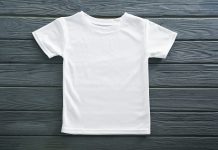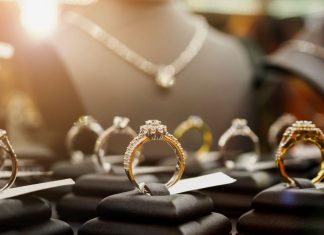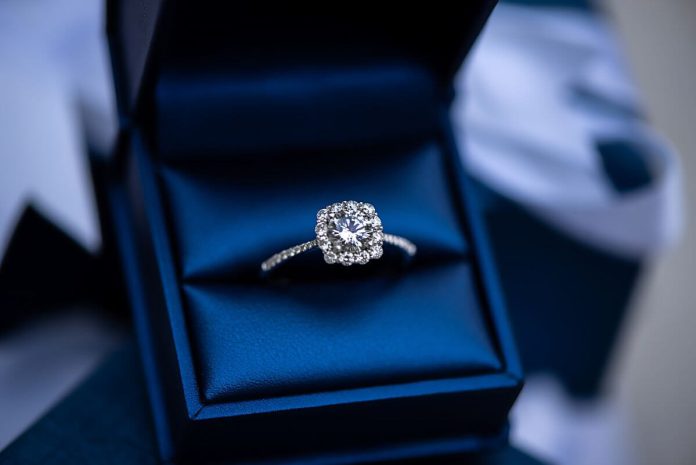
Contents
Last Updated on 16th April 2024
Nothing says timeless glamour and elegance like diamonds. They are a staple for every occasion and outfit so whether you’re looking to add to your jewellery collection or for the perfect anniversary gift, a diamond ring is always the right choice.
Finding the right ring is more than just a financial investment so you need to be as well-informed on every aspect that contributes to a diamond’s sparkle. From choosing your shape and cut to selecting a band metal, this step by step guide is designed to help you choose a piece that resonates with your personal style and occasion.
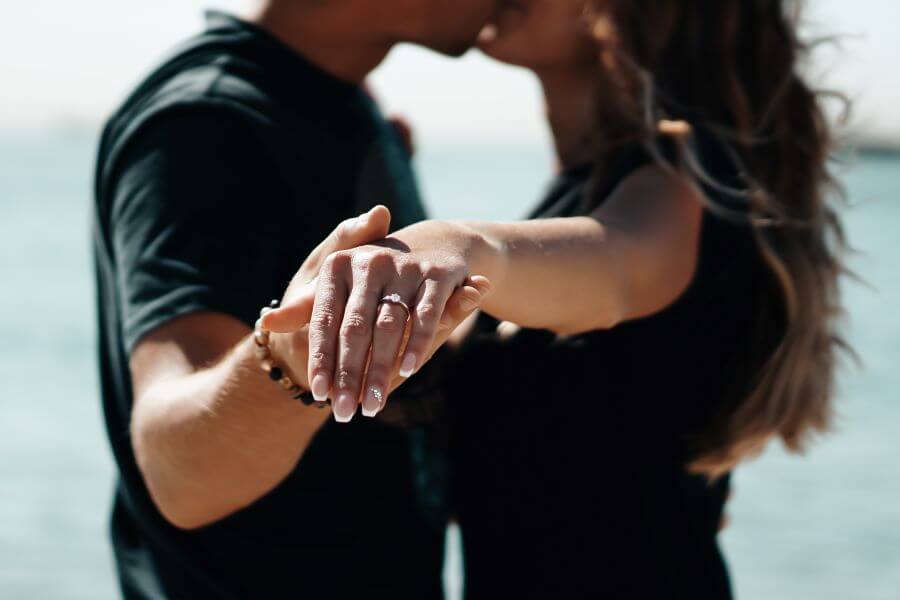
Knowing the 4Cs
The 4Cs are the global standard for assessing the quality of diamonds and their value. Understanding these factors is essential for finding the perfect diamond ring.
- Cut: This refers to a diamond’s brilliance and sparkle, and is the only factor not affected by nature. The general rule is the better the cut, the more the diamond will sparkle.
- Colour: The colour of the diamond falls into a D-Z scale and ranges from colourless to light yellow. The closer the stone is to colourless, the higher the value.
- Clarity: This C refers to the absence of inclusions and blemishes and whether you can see them with the naked eye. In general, the clearer the diamond, the more precious it is.
- Carat: Not to be confused with a diamond’s size, carat measures the diamond’s weight. The larger the diamond, the heftier the price tag.
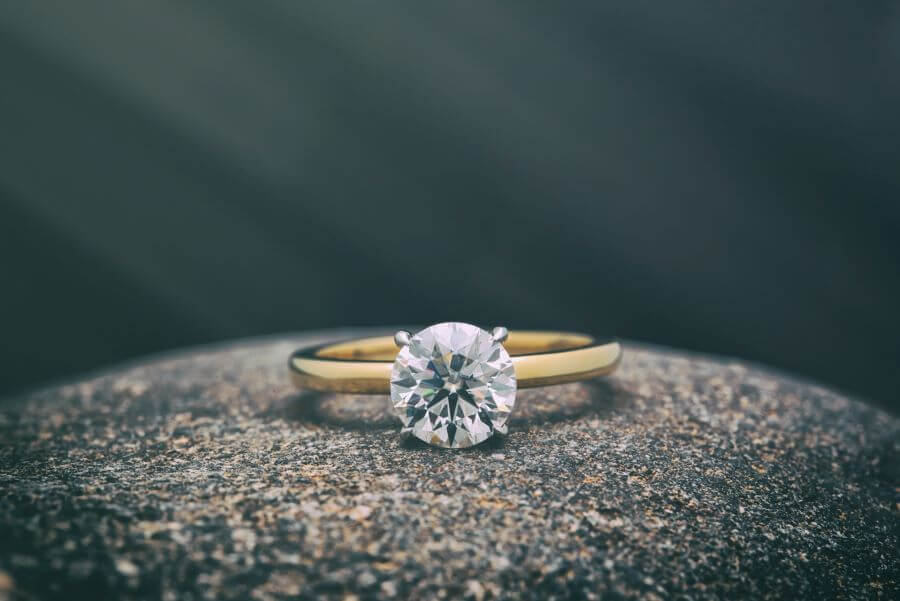
Choose your shape
Whether you’re picking a diamond ring for an engagement or just as a treat to yourself, the diamond shape is an important consideration and will affect the brilliance of your diamond. Asscher and emerald cut diamonds are similar in appearance boasting clean, straight lines and a hall of mirrors effect. A marquise diamond is an oblong style that emits a regal, vintage vibe.
Amongst the most popular shapes is the round brilliant diamond thanks to its unparalleled sparkle and brilliance. Other shapes include heart, oval, princess and cushion.
When deciding on ring style, you do need to consider if it is a stand alone piece or to go alongside a wedding ring, as this can be shaped to fit.
Narrow down the cut quality
Cut quality significantly impacts a diamond’s beauty and will determine how well the stone reflects light. While cut grades are not standardised across retailers, the general rule of thumb is that a well-cut diamond, regardless of shape, will appear brighter and more luminous.
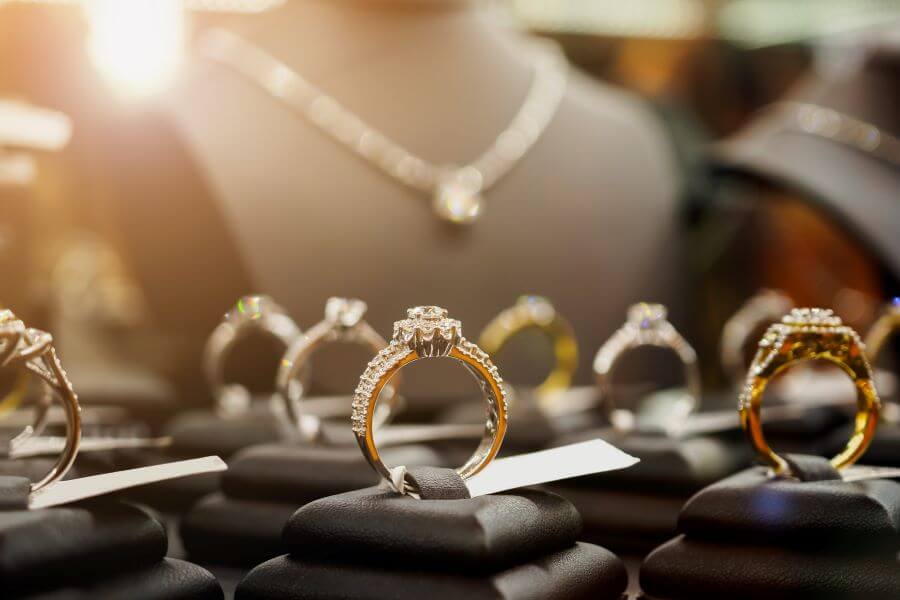
Pick a metal for the band
When deciding on the type of metal for your diamond ring, you should think about how it will complement your hand and personal style. It can also enhance the perceived size and colour of the stone.
Popular choices for metal type include platinum, silver, titanium, white gold, yellow gold and rose gold, and each one has different characteristics. Some metals are more durable and require less maintenance than others, but this is a luxury purchase so don’t forget it should also be glamourous and elegant.
Choose the setting
The setting of the diamond is critical to its security and style, and varies on ring size. From classic solitaires to more elaborate settings with stylistic flourishes and extra gemstones, the right setting can reflect a wearer’s personality.
You need to consider practicality and your lifestyle when selecting a setting as some will be better suited to everyday wear than others.

Ensuring your diamond is legit
Every diamond should come with a certificate and engraved with a matching serial number. Usually this is from a professional body related to diamond grading including:
Gemological Institute of America (GIA)
A non-profit institute considered one of the most respected authorities in gemology and diamond grading, and commonly who certifies your diamond. When ring shopping, look out for labels like GIA diamond.
BGI (British Gemmological Institute)
Situated in London the BGI was established in 1931 and offers reliable, accurate grading on the quality of your diamond.
American Gem Society (AGS)
An organization dedicated to ethical and professional standards in the jewellery industry, including diamond grading.
International Gemological Institute (IGI)
An independent gemological laboratory that provides diamond grading and certification services.
European Gemological Laboratory (EGL)
A network of gemological laboratories offering diamond grading and certification services.
Hoge Raad voor Diamant (HRD Antwerp)
A diamond grading and certification authority based in Antwerp, Belgium, known for its expertise in diamond grading and research. Most European labs have been influenced by the methods used by the GIA.






















